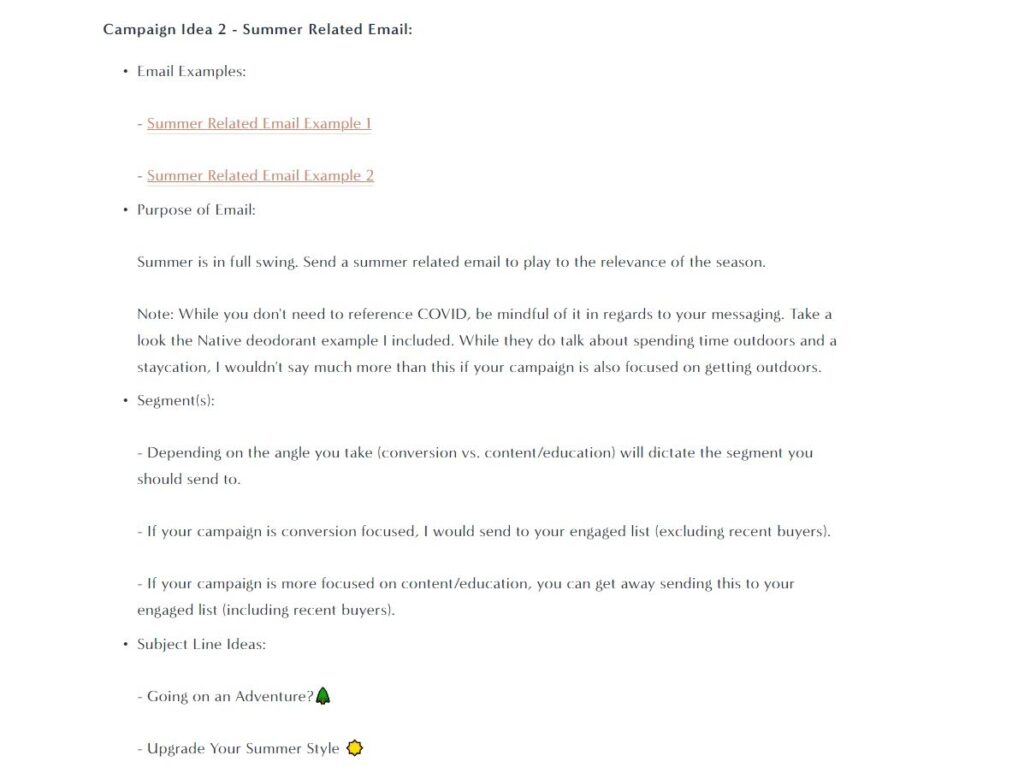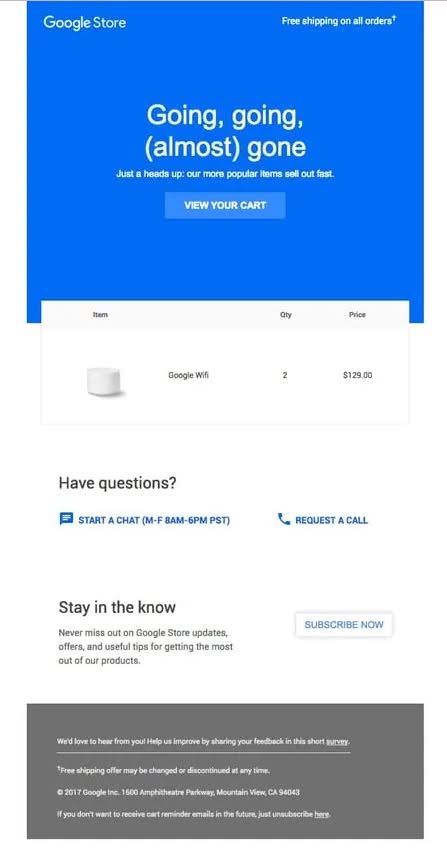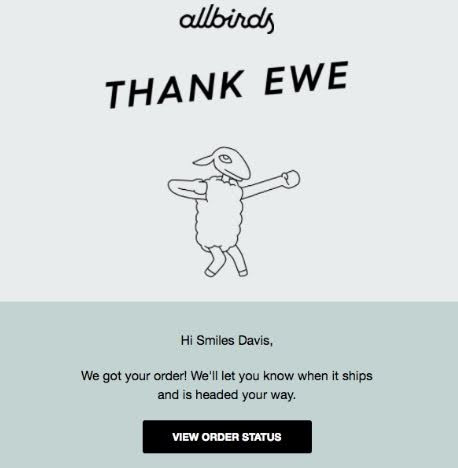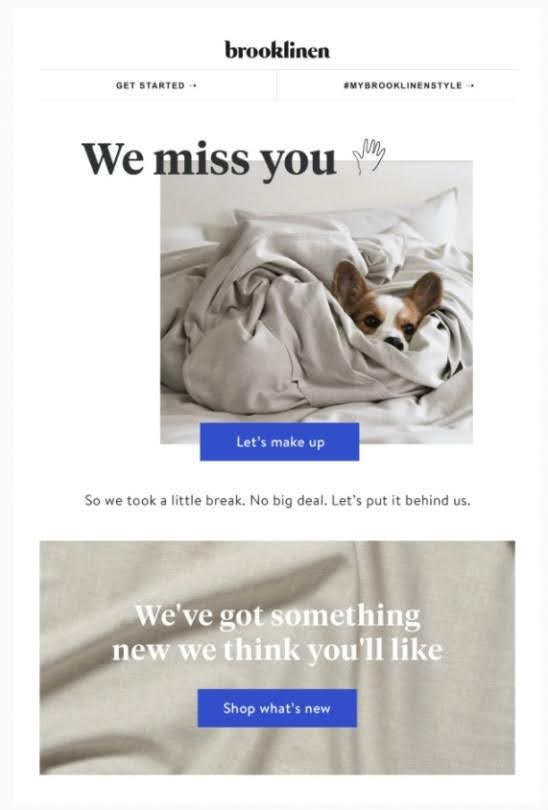FREE GUIDE: 3 Essential Ecommerce Email Marketing Campaigns
Learn 3 of the most important email marketing campaigns you should have in place for your eCommerce store to help increase revenue fast.
We never spam. That’s a promise.
Is email marketing for ecommerce stores still relevant? It’s as relevant as it can get and this guide will show you how to capitalise on this relevancy in 2024.
Are you a bit sceptical about whether email marketing is still profitable? Maybe you’ve even left this marketing channel on the back burner for whatever reason? Mistake.
Email marketing for ecommerce still does a massive job. Although social media is top of the game when you want to grow your business nowadays, email marketing is still among the best digital marketing tools. And we have numbers to prove that. Did you know that the average conversion rate for email marketing is 15.22% for 2023? That’s pretty good.
And it gets better. Each dollar you’d have spent on email marketing in 2022 would have given you a $36 return on investment. Not shabby, we’d say.
Ecommerce email marketing is an excellent way to acquire new customers, increase engagement with return customers, as well as boost revenue. But how do you start email marketing or how do you improve strategies so you sell more via this channel?
To make your email marketing efforts count, it makes sense to learn the ropes first. Then you can align your email marketing campaigns with your company goals and make them meaningful for your brand. So, why not do this immediately?
The comprehensive guide below will teach you how to build your mailing list, show you the types of email campaigns you can run for your ecommerce store, provide you with successful email marketing examples, and more.
But first, let’s define the term “email marketing” more closely.
Ecommerce email marketing refers to the practice of sending marketing messages to current and prospective customers via email. As you may know, the end goal is to educate, drive engagement, build customer loyalty, and increase conversions.
So much so about the role of email marketing in ecommerce. But what about the form? The form can range from simple weekly email sequences to complex email series targeted for customer re-engagement, loyalty campaigns, exclusive deals, etc.
Sounds fair enough in theory but does email marketing work for ecommerce? Let’s dive deeper.
So, how is email useful for ecommerce? The main advantage of using email marketing for ecommerce businesses is to attract repeat customers to your online store. Sticking to search engine marketing alone (even if you’re scooping highly targeted traffic) works to a degree as chances of getting your new visitors to return are slim.
To be totally honest with you, without reaching out to your customers via email, you’re blowing your chances at retaining the traffic you worked so hard to earn.
But there’s so much more to email marketing. When used properly, it can help you build relationships, increase sales, and grow your brand over time.
Now, let’s break the benefits of ecommerce email marketing down into more digestible chunks.
That’s it about the benefits but seriously, how do you make email marketing work for your ecommerce business? Let’s get busy.
We’re getting down to the nitty-gritty of ecommerce email marketing strategies. But first, let’s zero in on how to build your mailing list.
It’s all legit to crack the ways to engage, reach, and sell more through email marketing. But before that, you need to build a quality email list. It’s a starting point for successful email marketing and an overture to any of your ecommerce email marketing campaigns.
Below are step-by-step instructions on how to effectively grow your email list.
Whichever track you take to rake in more prospects through email subscription, always explore ways to provide value to your subscribers and build lasting relationships with them. The sections below discuss how to do just that.
If working on your ecommerce email marketing strategy is going to drive traffic and sales to your online store, you better do it right. Think of it this way, and you know this better than anyone, surviving in the ecommerce world is not a walk in the park.
The better you identify points of focus for your email marketing strategy, the better you survive. That said, let’s explore how to maximise the impact of your email marketing efforts and stay ahead of the competition. Below are some email marketing strategies and best practices.
Email offers and newsletters are a unique and cost-effective way to capture your audience. This especially goes if you’re scoring high at open rates but you’re falling behind with click-through rates.
But knowing your audience is mandatory. It’s half of the success of successful email marketing. And email marketing is all about delivering appropriate messages at appropriate times—you just can’t beat that. So, first segment your audience according to their engagement, then act accordingly.
Furthermore, if you know subscribers who’ve previously converted are 74.7% more likely to convert again, you can dive into customer motivations and think along the lines:
Furthermore, you’d also benefit from sending product recommendation emails to your existing customers. A recommendation based on their previous purchase would likely prompt them to a repeat sale.
For audiences who have not yet converted, invest in building brand trust, and remember discount offers are going to make conversions less risky.

Email offers and newsletters are a unique and cost-effective way to capture your audience. This especially goes if you’re scoring high at open rates but you’re falling behind with click-through rates.
But knowing your audience is mandatory. It’s half of the success of successful email marketing. And email marketing is all about delivering appropriate messages at appropriate times—you just can’t beat that. So, first segment your audience according to their engagement, then act accordingly.
Furthermore, if you know subscribers who’ve previously converted are 74.7% more likely to convert again, you can dive into customer motivations and think along the lines:
Furthermore, you’d also benefit from sending product recommendation emails to your existing customers. A recommendation based on their previous purchase would likely prompt them to a repeat sale.
For audiences who have not yet converted, invest in building brand trust, and remember discount offers are going to make conversions less risky.
So you want to capitalise on your email marketing strategy? Thinking along the lines of personalization and dynamic content is a good place to start. The best email sequence for ecommerce is the one that uses dynamic content because it has been shown to increase email ROI by 100%. But what’s the secret behind it?
Dynamic content in email marketing refers to content that contains variable elements based on user data, preferences, and behaviours. The more relevant the content you offer the more likely your email campaigns are to succeed and the higher your click-through rates.
When you launch your dynamic content, you retain regular marketing emails and send them to your entire database. What changes, though, are your dynamic elements: you choose a characteristic and make it variable within your emails.
Below are some examples of where you can take your dynamic content. You can:

Did you know that placing just one clear CTA in emails increases clicks by 371% and sales by 1617%?
Knowing what you want your subscribers to do and steering them towards that place is one of the best email marketing strategies for ecommerce under the sun.
Your email subscribers should have it all laid out loud and clear—whether you want them to have a sneak peek at your promotional video, read your latest blog post, check out your brand-new product, etc.
Enter CTA or a call to action. Once you have your goal well-thought-out, a CTA is a tool—in the form of either a hyperlink or a button—that steers your email users toward that goal.
The rule of thumb is to make your CTAs clear and concise.
An effective CTA is that which will prompt your email subscribers to act, and below are some tips that can help your campaigns result in success.
Another ground rule is to A/B test your calls to action religiously.
A/B testing measures user response to your most popular calls to action. Here a little experimentation goes a long way. That said, you can experiment with your text length, your word order, the verbs you use, as well as the colour and shape of your buttons.
Sounds silly? It’s not. Something as minute as one word can make a massive difference in email marketing. Unbounce increased their click-through rates by 90% just by changing their phrasing from “Start your free 30-day trial” to “Start my free 30-day trial.”

Split testing aka A/B testing is an ecommerce email marketing strategy that carries a huge potential to improve your campaigns. It’s the single most effective way to learn whether your email campaigns are working or not.
Many businesses skip A/B testing merely for not knowing how and what to test, while split testing is truthfully quite straightforward. It’s as simple as sending two different versions of your email to two different sample groups within your email list.
Again, a little goes a long way here too. According to Forrester, split testing your emails can boost your conversion rates to up to 400%. Yes, you read that right.
Now, to dive deeper into the testing bit itself. You start A/B testing by opening your email marketing tool and setting up two identical emails—and then you change a single variable—such as CTA text or button colour.
Next, you send the two emails to two test groups from your email list to see how they measure up.
The winning email is determined by what you’re trying to measure. For example, if you’re curious to know which version is more likely to get people to open your emails, you’re going to use the open rate as your success metric.
Let’s say the first email statistically performs better and gets higher open rates. As a result, the email marketing tool will automatically send this email to the rest of your subscribers.
Below we list just a few elements you can test, to stir up your imagination:
So, let’s say you decide to start doing email marketing for your ecommerce store—where do you start?
To figure out the nuts and bolts of email marketing for ecommerce stores, examples of how others did it are good to have at hand.
We also made sure to vary the types of emails so you get a picture of what’s out there. This will give you more ideas as to how you can hone your email marketing strategy and make it work for your business.
It’s just as true for the online world as it is for real-world interaction: you only get one chance to make the first impression. When we talk in terms of email marketing—that’s where welcome emails jump in.
Welcome emails are all about building a positive first impression and showing your new subscribers what you’re made of. And you better do this right—because this is likely the place where you’ll get the most attention in the entire email marketing cycle.
That said, to make sure your welcome emails are nice and tight, keep your email templates clean, simple, and concise. And remember a nudge in the right direction—in the form of rewarding new users for signing up—speaks volumes to your new potential customers.

Pay attention to how Food52 are rewarding their new sign-ups with exclusive offers while not shying away from showing off their brand personality with peppered humour in all the right places.
If you’re wondering what kind of email campaigns you can run for your ecommerce store, promotional emails are a great place to start.
You use promotional emails to keep your subscribers in the loop about your sales, discounts, and special offers. The end goal is to drive sales and encourage customers to buy from your online store.
The pro tip when making promotional emails is to go all out within the creative process. Remember, these are the emails that convert your email subscribers into customers, and your customers into your brand advocates.
See how Headspace uses clean design and simple wording to offer a promotional price to their email subscribers?

A cart abandonment series is used to help you recover lost sales when a customer has added items to their shopping cart but never completed the purchase. That said, the point of these emails is to remind your customers of the languishing shopping cart items and incentivize them to take action.
It’s an ecommerce email marketing strategy you can capitalise on big time.
Fact: The typical cart abandonment rate varies between 60% and 80%. Think of all the prospects you can recoup by a bit of strategizing. And it gets better. Abandonment emails are rife with conversion potential—and we’ve crunched some numbers—the average click rates are 9.50% while open rates are a whopping 41.18%.

Check out Google Store’s elegant solution for abandoned cart emails. With crafty copywriting, clear CTA, and personalization (by featuring the customer’s cart)—it falls short in neither department.
“Going, going, (almost) gone” and “Our popular items sell out fast” are artfully done to prompt urgency and urge users to action.
Another ecommerce email marketing example is upsell/cross-sell emails. The art of sending effective upsell/cross-sell emails is all about encouraging your existing customers to for repeat purchases—of a more expensive product (upselling) or of an additional product (cross-selling).
These may be complementary or upgraded products, or such as in the case of Saas products—where you sell cloud-based software people subscribe to (rather than make a one-off purchase)—they can be account upgrades where people unlock additional resources and advanced features.

A good case in point here is Elementor, a software company that sells a website builder that goes by the same moniker. Elementor excels at crafting on-point CTAs and laying out benefits users can gain from their premium plan in the upsell email above.
So, are there any more kinds of email campaigns you can run for your ecommerce store? The answer is yes and it’s post-purchase follow-up emails. These types of emails are good to use in your email marketing when you want to engage repeat customers and build lasting relationships with your customers.
A real-world example would be a post-purchase thank you email where you express gratitude to users for trusting your business and where you offer extra resources and support.
The Allbirds screenshot above is a good example of a simple order confirmation post-purchase follow-up email.

Your ecommerce brand needs email marketing for yet another reason and it’s to re-engage your customers. Yes, you guessed it right—it’s where re-engagement emails come in.
Re-engagement emails serve the purpose of engaging a pool of audience that’s not yet too keen on your brand but they’re well within reach—your “disengaged subscribers”. And yes, they may not have made a purchase in ages and they may not have even bothered opening your emails. Yet they’re still your subscribers and you may warm them up for more active engagement.
So how do you re-engage a disengaged subscriber? You prompt them with offers too good to miss out on. You may even have them back in your customer journey funnel sooner rather than later.
Like in the example above, keeping it simple and adding a dash of humour may be just what your customers need to get back in the game. You can also try to incentivize them with discount offers or giveaways that can’t be easily missed.
Other than that, cute phrases like “We miss you!” or “Please come back!” can give them a nudge to reestablish a relationship with your brand.

99% of ecommerce stores are barely scratching the surface when it comes to email revenue. Yet, out of all marketing channels, email delivers the biggest bang for the buck.
Be among the smarter 1% who knows ecommerce brands need email marketing to grow their businesses. And you can start benefiting from your email campaigns as we speak.
Subscribe to EcomEmailPro and stop leaving money on the table. It’s an easier way to create and send emails so you engage with your customers. We’re an email marketing agency specialising in ecommerce stores. We’re here if you need a safe pair of hands to help you meet your business goals through email marketing.
Want to start converting your subscribers into paying customers? We’re a dependable, cost-effective email marketing service provider and we have the know-how to help you do just that. And the best part: we can start as early as today. Contact us if you want to chat.
But first, check out what others had to say about doing business with EcomEmailPro.
So the bottom line? Ecommerce email marketing is a powerful digital marketing tool that can help you advertise by giving your customers the right piece of information at the right time.
It’s the winning combination and as such is a pity to miss out on. The benefits for your business can be tremendous and most importantly, email is here to stay and this isn’t likely to change in the foreseeable future.
Try and see whether it can move the needle for your business. Have a chat with our service rep to see how you can benefit from sending high-performing bulk emails through EcomEmailPro.
Or get our free guide on email marketing campaigns created by our savvy email marketers for ecommerce businesses like yours. It’s bound to nudge you in the right direction.
FREE GUIDE: 3 Essential Ecommerce Email Marketing Campaigns
Learn 3 of the most important email marketing campaigns you should have in place for your eCommerce store to help increase revenue fast.